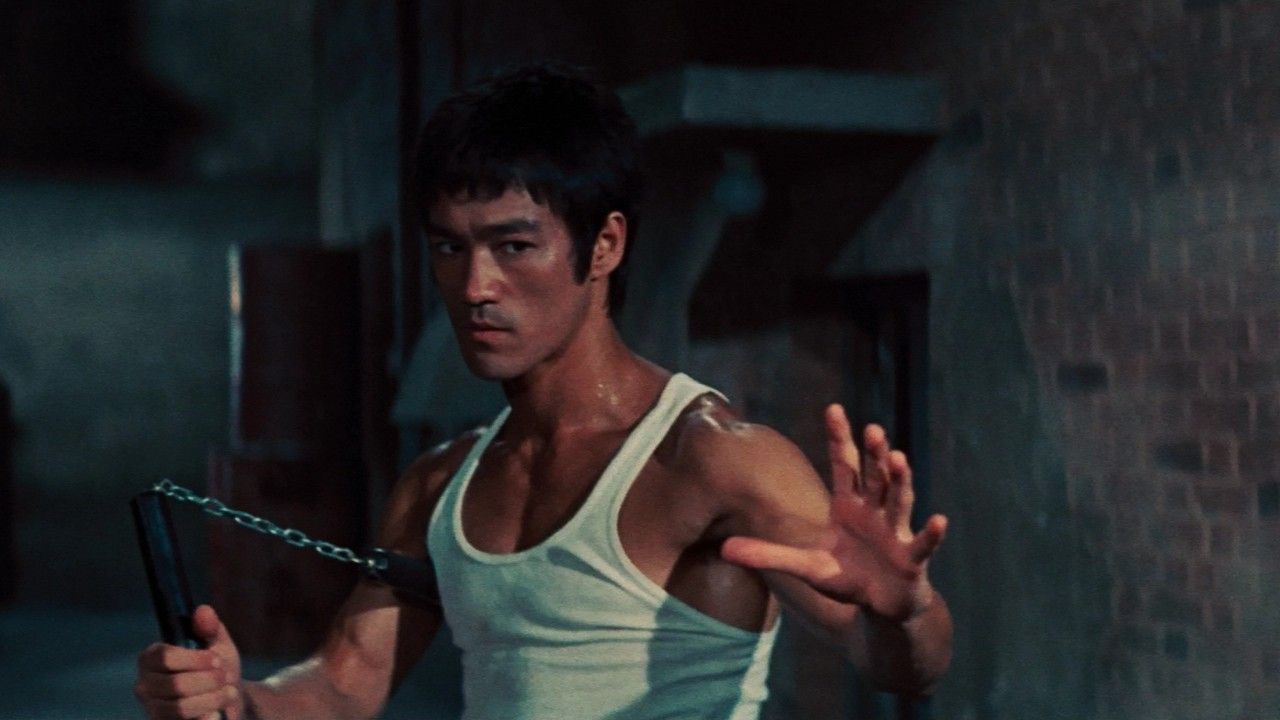The Way of the Dragon (Bruce Lee, 1972)

Much more satisfying than Lee’s previous two films, The Big Boss and Fist of Fury. The plot is still deathly simple: Lee is sent by his uncle to Rome to defend a Chinese restaurant against a gang of thugs trying to force a sale. But Lee, this time serving as writer and director in addition to star and choreographer, gets a lot more of interest to do in-between the fights. It may be strange to say, but the opening airport sequence, with Lee’s Tang Lung stared at by an old white lady and then attempting to order food in a Western restaurant (capped by his showdown with The Five Soups) is one of my favorite sequences in any Bruce Lee film, above and beyond most of his fights. He’s aided immeasurably by Nora Miao as the straight woman in these scenes, exasperatedly showing him around, visibly annoyed to be afflicted with this bumpkin. But watch how the way she looks at Lee changes after she sees him fight: there’s no romance in the film, but plenty of sex in that gaze.
The fights in Bruce Lee’s films are different than what came before and after in good and bad ways. To the good is their realism: much shorter, more violent, and more wrenching than the opera-influenced balletic displays or effects-driven sword fights of the late 60s wuxia films. But the downside is that they never really feel like contests, more like a bunch of guys standing around waiting for Lee to inflict violence upon them (the climactic fight with Chuck Norris here is a rare exception, acknowledged by Lee with a touching grace note of respect). The choreography in a King Hu or Chang Cheh movie is less realistic, but more exciting. The charge you get in a Bruce Lee action scene is different, it comes not from the “bodies in motion” thrill you also find in a great dance sequence, but emanates instead from Lee himself, first from his status as an icon (of Chinese nationalism, of masculinity, of badassery) and only secondarily from the character he’s ostensibly playing. His tragic early death has only heightened this effect: it’s impossible to watch one of his films now outside the context of his star status, to separate it from the deep and widespread influence he had, not just in Hong Kong, but worldwide.
Lee’s work as a director is a significant step-up from Lo Wei’s in the previous two films. Lee is less choppy in his editing, adding to the realism of the fights by allowing them to play out in longer, more distanced takes. He does make occasional use of the point of view shots that Lo used as well, with Lee kicking or punching directly at the camera, an effect that would be more terrifying if it didn’t feel slightly silly. The comedy in the first half of the film is charming, Lee’s fish out of water much more interesting in Rome than he was in The Big Boss‘s Thailand.
I can’t help but wonder where he would have gone from here. He died in 1973, two years before Lau Kar-leung’s directorial debut and four years before Sammo Hung’s. How would he have fared with those guys? Would Lee’s idiosyncratic street fights have meshed with Lau’s traditionalist Southern Shaolin styles or Hung’s opera acrobatics? Would he have pushed the comedy in his films along the lines Jackie Chan and Yuen Woo-ping would explore? How would he have fared in a showdown with equally skilled and accomplished martial artists like the Five Venoms, rather than an endless succession of ugly white guys? Would he have found a second life in the heroic bloodshed cop/Triad films of the 80s and 90s (like Ti Lung did in A Better Tomorrow), or would he have been reduced to smaller cameo roles (like Ti Lung in Tiger on the Beat)? Or would he have simply crossed over to Hollywood, leaving the nationalism of his Hong Kong films a faint memory, a blip on the road to riches playing Conans, Predators, and Rockys?
